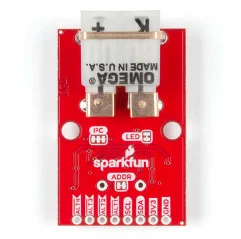Beginning with the Raspberry Pi (RPi) micro-computer, I had several options for reading temperatures. I chose the I2C 4-wire interface since it is more flexible and only uses a total of 4 wires to communicate with dozens of devices, if needed.
The temperatures I need to read will be approaching cryogenic temperatures. The environment will be cold and dry when the equipment is operating and will be warm and damp when its not. For this reason, I chose to use thermocouples and two I2C thermocouple amplifiers.
K-type thermocouples have good performance in the sub-zero range and they are not too expensive.
I chose the MCP9600 thermocouple amplifier because it can read 8 different thermocouple types, has an I2C interface, and has several other features that could be handy in this and other projects. It is important to note that changing a thermocouple type requires the physical connector to be changed, also. Even though the library supports multiple thermocouple types, you cannot switch to a different thermocouple type simply by changing the parameter in the amplifier register. It requires the thermocouple and the onboard connector to be changed also.
I was somewhat disappointed to see the lack of C/C++ support for the RPi and sensors. I found a C library called WiringPi that allows interfacing to the I2C interface, but it has been deprecated by its author. I decided to build around it, but was careful to immediately abstract the WiringPi functions so I can move to a different library if needed.
The thermocouples read very close at two calibration points; one being the boiling point of water and the other the freezing point of water. While it is important to read temperatures reasonably close, this project is more interested in the differential temperature and pressure changes. As water sublimates it will maintain the vacuum chamber at some temperature and pressure near the sublimation line. The only way to be sure sublimation has completed and there is no free water left in the product, is to see it deviate from the sublimation line.

No comments:
Post a Comment
Note: Only a member of this blog may post a comment.